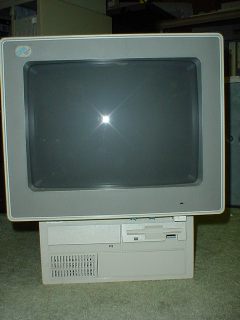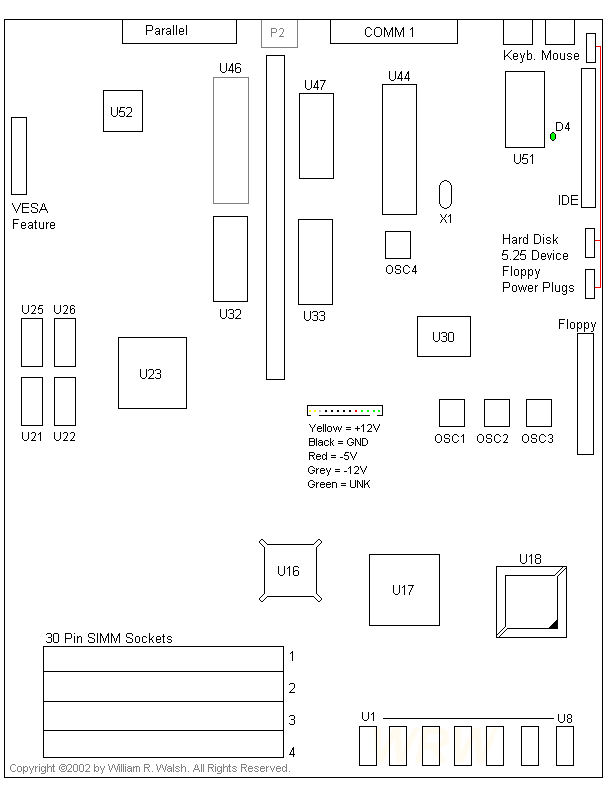EduQuest Model 30 9603-01X

XT-IDE Card
Power Supply
Planar Outline
Option Cards
It'd be pretentious of me to say that these pages have been anything like maintained since they were written in the early 2000s. They've basically slumbered since I created them. Very few people have come forward with any more information about these machines. The EduQuest division of IBM is long since gone, and even IBM itself is now out of the personal computer business. Whether timely or not, I cannot guarantee that there will be any further updates to these pages. Still, if you have information about these systems, their supporting software or even if you'd just like to share your story of having used/seen/bought one or whatever, I'd certainly like to hear from you. I no longer own any working EduQuest systems at this point in time, and don't expect that I'll ever find any more in future. - WW, September 2016
Referring to these systems as though they were related to the PS/2 Model 25 is technically incorrect. However, it's quite obvious that at least some of the same designers worked on both. EduQuest systems are much bigger in size than your average Model 25.
CPU: IBM 386SLC-25 CPU (soldered)
RAM: 4MB Installed RAM (soldered)
Removable storage: 1.44 MB Floppy Disk Drive
Despite its name, the 386SLC is a 486SX from a software perspective. It's actually an interesting mix of technologies: you have the 16/24 bit data and address buses from the 386SX, a 486SX compatible instruction set with some enhancements by IBM, a few power saving features and some extra cache over that of a standard Intel 486 CPU. IBM had at one time a license to produce and modify any Intel microprocessor design. They did so for many years, up until at least the early Pentium era.
DOS 5.0 is in ROM on this, just like with the EduQuest 40. A Setup utility is built in, there is no reference or starter disk I know of. As with the other models, the only way I've found to get into the BIOS setup utility is to cause an error during the power on self test (POST). Holding down a key on the keyboard is quite effective for this. All EduQuest models that I've worked with produce a distinctly unhappy "beep boop" sound when a self test failure occurs, so you'll know when you've managed to trigger an error.
I have found that use of a disk manager (those based on Ontrack software) requires a "cooked" diskette as the EduQuest Models 30 and 40 (and possibly all other EduQuest models) cannot boot the DR-DOS used with Ontrack's solution. Why I don't know. Replacing the DR-DOS system with MS (or possibly even PC) DOS might work. Whether these machines can boot FreeDOS or not is unknown.
528MB disks are the maximum supported by the onboard IDE. Higher capacity is possible if you use a disk manager program. However, there is also a hardware solution to using larger disks or CompactFlash cards in the form of the XT-IDE board.
XT-IDE and the EduQuest
It is reported that when used normally, an XT-IDE adapter is not compatible with the EduQuest as its option ROM is not allowed to load. Chris Esch discovered that there is a solution in the form of removing the expansion ROM that contains the EduQuest's DOS-in-ROM functionality. From that point, the XT-IDE adapter's ROM can be placed into the socket from which the original DOS-in-ROM chip was removed. Be careful that you insert the chip correctly. Otherwise you may burn it or your EduQuest system out.
Power Supply
I noticed at times of changing load, that the power supply in all of my EduQuest systems would sometimes behave in an unstable manner. The screen image would shrink or "vibrate" noticeably if something like an internal CD-ROM drive were to spin up. None of them ever failed as a result of this, and I never got so far as to diagnose it. My best guess would be faulty or dried-out electrolytic capacitors that had changed in value, particularly any that were being used as power filters.
Planar And Related Cards

Components:
X1 - 12.000MHz XTAL
OSC1 - 14.318MHz (Software RTC, "Color Burst" signal (?), possibly ISA bus clock?
OSC2 - 50.000MHz (Halved to 25MHz--system CPU clock)
OSC3 - 16.000MHz (for ?)
OSC4 - 24.000MHz (for FDC?)
D4 - Green LED
Go Back>
Copyright 2002-2016 William R. Walsh. Some rights reserved.